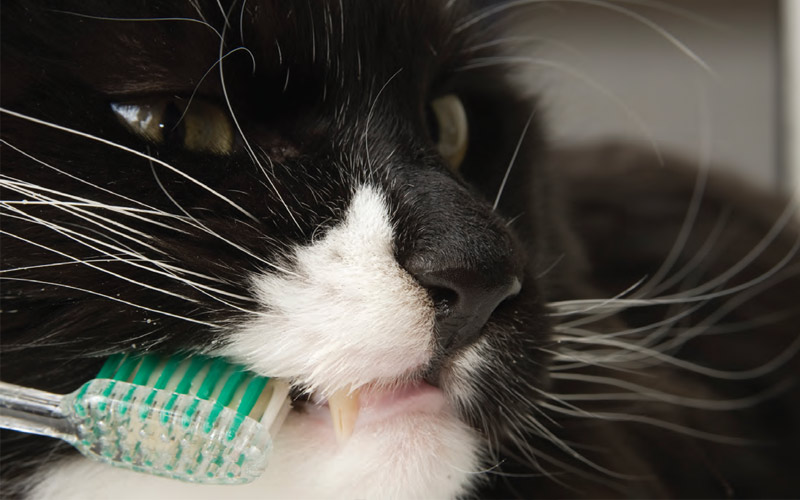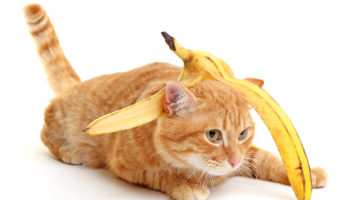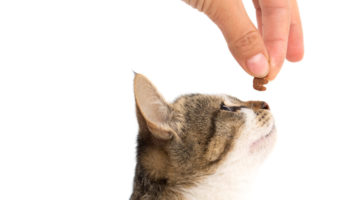Keep your kitty’s teeth white and her breath fresh with these simple tips for dental health.
“Horace has terrible breath,” Tammy says of her friendly black-and-white domestic shorthair. “I love to have him cuddle up with me on the bed at night, but if he yawns or comes close to lick my face, I can hardly stand it.”
Chances are, Horace has periodontal disease. Bad breath is one of the main signs that a cat’s teeth and gums aren’t in the best of shape. If your cat’s breath is foul, her dental health might be at risk. Take a look in her mouth. If you see brownish teeth or reddened gums, it’s time for a visit to the vet.
Other signs of periodontal issues are difficulty eating, dropping food or failing to chew it properly, drooling or pawing at the mouth. Any or all of these clues mean your cat is in discomfort and needs attention, even if she otherwise seems fine. Remember that cats are good at hiding pain.
Ignoring the symptoms of periodontal disease can lead to more serious problems down the road, such as painful abscesses and tooth loss. And since the harmful bacteria in a diseased mouth can spread to other parts of the body via the blood, her heart, kidneys and other organs may eventually be affected. In other words, dental disease that is left untreated may ultimately shorten your cat’s life.
What you can do
1If your cat has existing signs of dental disease, take her to the vet to have her teeth professionally cleaned. It’ll help her feel better, sweeten her breath, and provide you with a good foundation on which to base a treatment program to prevent or minimize further problems. Make sure she gets a dental checkup at least once a year thereafter.
2Look at your cat’s diet. If she’s eating poor quality food, make it a priority to switch her to healthier fare. Most cats don’t like change, so you’ll have to take your time and perhaps try a variety of different new foods, but go for the highest quality premium product you can afford. Make sure it contains no harmful additives. Also give her some chunks of raw meat, or raw (not cooked) chicken necks – these will encourage your cat to chew and will help keep her teeth clean.
3Toss the commercial cat treats, especially the semi-moist ones that are full of artificial colors and other chemicals. Your kitty may love them, but they’re not good for her. Buy her natural products – freeze-dried or dehydrated treats made from real meat are a good choice. Just make sure the company’s ingredients are domestically sourced. Steer well clear of jerky treats made in China.
4See if you can brush your cat’s teeth. Not all kitties will allow this, but if you have a kitten or young cat, make an effort to get her accustomed to having her mouth handled on a regular
basis. Start by gently opening her mouth and putting a finger inside, rubbing her teeth and gums. Be calm and patient. If she begins struggling, stop and try again another time. If she
accepts the handling, reward her with praise or a healthy treat after each session, so she will learn to associate tooth-brushing with something positive. When brushing a cat’s teeth, be sure to use toothpaste formulated for animals – never use human toothpaste. You can also buy brushes made specifically for animals, or use a rubber finger glove.
5If your cat won’t accept brushing (and don’t force it if she won’t), check out the variety of brushless dental products on the market. These gels and sprays can be applied directly in the mouth, or added to water, depending on the company. Again, be sure to buy a quality product such as Leba III (lebalab.com) or VetzLife Oral Care (vetzlife.com).
Poor diet is a PRIMARY culprit
Unfortunately, most cats develop some degree of dental disease by the time they’re around three years of age. One of the main causes is poor diet. Although commercial pet food companies claim that kibble cleans teeth, the opposite is actually true. Poor quality dry food tends to shatter into pieces when the cat bites down on it, so it really doesn’t do much to help abrade plaque from tooth surfaces. Not only that, but softened kibble can get stuck between the teeth, increasing the risk of dental issues.
Preventing or reducing dental problems in your cat isn’t that challenging. The younger your kitty is when you start, the better – but cats of any age can benefit. Remember… a pain-free mouth means better overall health and a happier, more contented kitty.







No Comment